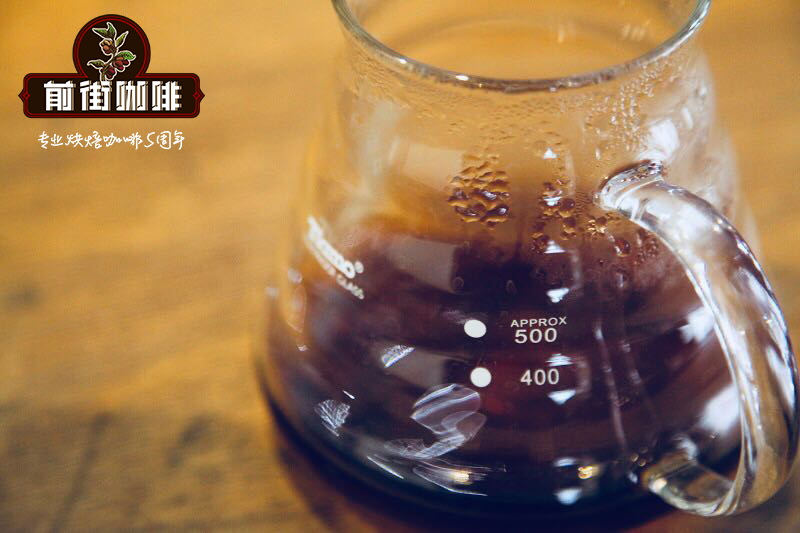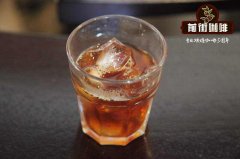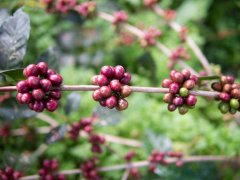What exactly is Ninety Plus coffee90+ coffee?

Professional coffee knowledge exchange more coffee bean information please follow the coffee workshop (Wechat official account cafe_style)
Friends who like to drink individual coffee are of course no stranger to Yega Xuefei, a geisha or Manning. But when it comes to the raw coffee beans of Ninety Plus (90 +), many coffee lovers always feel that they are wearing a mysterious veil.
Joseph Brodsky founded Ninety Plus (90 +) in 2006, and Joseph began his journey when the Geisha species appeared in Panama in 2003 and 2004, but when he didn't find the result he expected in Panama, he had another idea. Perhaps there are still some of Ethiopia's more than 10, 000 coffee varieties that have not yet been discovered. In order to ensure quality, 90+ adopts a cooperative model with local manors, with complete control from planting, sampling and harvesting to subsequent processing and cup testing. 90 + exclusive Profile Processing ensures that each coffee bean has a unique and stable flavor trend and quality, while 90 + coffee is unique in the market like fine red wine.
The nomenclature of 90 + beans is completely different from that of the usual boutique beans. First of all, unlike the usual names of producing areas and manors, each bean is named according to its flavor. For example, the famous Nekisse is originally intended to take its name from Shakisso's nectar. The naming of 90 + usually starts with the concept of flavor, then the name, and then the choice of producing areas and cooperative farms. It is very different from the general at this point, it is a brand with boutique management style.
It is not difficult to find that usually beans have the letters N, H or W, such as Ethiopian Yiagacheffe G3 N, which is commonly seen in the market, where N stands for Natural. H = Honey (honey treatment) and W = Washed (washing). Here, 90 + also has a different view, they think that rather than using the method of treatment to distinguish beans, it should be distinguished by the trend of flavor. Generally speaking, each treatment of beans will have a more representative flavor, such as:
Sun: unrestrained fruit aroma
Honey treatment: the sweetness is outstanding.
Washing: the flavor is cleaner.
However, 90+ believes that sometimes there will be the same flavor trend under different treatments, for example, the flavor performance of beans in honey may be similar to that of washed beans, so their family has introduced three basic flavor labels of N2, H2 and W2, and the flavor is distinguished by the intensity of fruit aroma and taste:
W2: (Low) low fruit tonality, emphasizing brightness, acidity and floral aroma
H2: (Moderate) moderate fruit tonality, emphasizing sweetness, fruit taste (non-aroma) and tea flavor
N2: (High) strong fruit tonality, emphasizing unrestrained flavor, sweet and sour, jam and dried fruit.
In 2011, in order to improve the stability of raw beans grown in Panama during the drying stage, Joseph developed a solar drying system inspired by a wood drying chamber with the University of Wisconsin in the United States and named this exclusive treatment Solkiln? (SK). Of course, the beans that have been specially treated are very expensive, and because there is very little space they can hold.
Finally, 90 + beans also have a scoring system different from the general 100 points. The main reason is that 90 + beans should exceed 90 points on cup tests, and their grades are based on three factors: flavor, cost and output:
Level 7: special flavor, meticulous and impressive
Level 12: besides being impressive, it needs to be topical.
Level 21: a rare Level 7 with a flavor that usually surpasses that of Level 7.
Level 39: Level 12, which has low yield, has a higher flavor than Level 12.
Level 95: at present, the highest grade, from dried incense to import, has a great change and impressive, and the output is very rare.
Important Notice :
前街咖啡 FrontStreet Coffee has moved to new addredd:
FrontStreet Coffee Address: 315,Donghua East Road,GuangZhou
Tel:020 38364473
- Prev

What is cold coffee? What do you need to pay attention to when making cold coffee? The area of cold extraction and iced coffee
Professional coffee knowledge exchange more coffee bean information Please follow the coffee workshop (Wechat official account cafe_style) with the rising temperature, cold coffee has become a new favorite of friends in summer. Cold extracted coffee, which looks like deiced American coffee and ice coffee, how does it attract everyone, and why is it so expensive? 01 | the flavor of cold extracted coffee is higher and colder.
- Next

How should the planting conditions of coffee trees be planted?
Coffee is one of the three biggest drinks in the world, but do you know how it is grown? The important condition of coffee cultivation has a noun called coffee belt. There are more than 60 coffee producing countries in the world, most of which are located in the tropics and subtropics between the Tropic of Cancer (latitude 2326). This coffee growing area is called coffee belt (Coffee Belt) or coffee zone (
Related
- Beginners will see the "Coffee pull flower" guide!
- What is the difference between ice blog purified milk and ordinary milk coffee?
- Why is the Philippines the largest producer of crops in Liberia?
- For coffee extraction, should the fine powder be retained?
- How does extracted espresso fill pressed powder? How much strength does it take to press the powder?
- How to make jasmine cold extract coffee? Is the jasmine + latte good?
- Will this little toy really make the coffee taste better? How does Lily Drip affect coffee extraction?
- Will the action of slapping the filter cup also affect coffee extraction?
- What's the difference between powder-to-water ratio and powder-to-liquid ratio?
- What is the Ethiopian local species? What does it have to do with Heirloom native species?

